|
The Charles Lutwidge Dodgson Collection embraces manuscripts, sketches and watercolors,
correspondence, and scrapbooks representing the career of Dodgson as well as reflections
upon and interest in that unique career both during and after his lifetime. The material,
largely derived from the collection of Warren Weaver, is arranged in two series: Series
I.
Dodgson, Charles Lutwidge, 1850-1897, and Series II. Dodgson-Related Materials,
1864-1971. |
|
The namesake first series, running to slightly more than one box, consists of two
subseries, the first comprising Dodgson's professional and literary works, the second
his
outgoing letters. Subseries A. Works, 1850-1897, includes puzzles, verse, and sketches
created for the amusement of Dodgson's friends, young (mostly) and otherwise, along
with
problems in logic and mathematics, and proofs for books or periodical articles. |
|
The most important--and the earliest--work present is the author's Rectory magazine
of
1850, "a compendium of the best tales, poems, essays, pictures &c that the talents
of
the Rectory inhabitants can produce." This manuscript was created in the main by Dodgson
in
his eighteenth year for the amusement of his younger siblings in the Croft rectory
where the
family had moved from Daresbury in 1843. It is one of four such efforts known to exist
today. |
|
Subseries B. Outgoing Letters, 1860-1897, contains a fair representation of Dodgson's
extensive correspondence, including letters to family, Oxford colleagues, editors,
child
friends and their parents, and his Eastbourne landlady, Mrs. Benjamin Dyer. |
|
Most of the correspondents are represented by only a letter or two from Dodgson, but
for a
few of his child friends and their families, several letters are found in the collection.
Concerning the Henderson children Annie and Frances there are ten letters to their
mother.
Among the six letters to Agnes "Dolly" Argles is one in a microscopic hand signed
by
"Sylvie." Nine letters addressed to Edith Headland Stevens are present, along with
four to
her daughter Enid, one of which is typewritten and signed "Lewis Carroll." Individual
letters to Janet Merriman and her father Dr. Henry Gordon Merriman are accompanied
by six of
Dodgson's photographic prints of Dr. Merriman, Janet, and her brother Harry. |
|
The second series, Dodgson-Related Materials, 1864-1971, runs to nearly three boxes
and
contains Alice in translation, Alice-based artwork, correspondence, scrapbooks, and other
materials. These materials largely originated in the extensive collection of Carrolliana
assembled by Warren Weaver, a mathematician, computer pioneer, translation theorist,
and
long-time officer of the Rockefeller Foundation. Nothing contained in this series
is
directly attributable to Dodgson but virtually all of it was inspired by his life
and work
in some way. |
|
The group of Alice extracts in various languages along with Anna
Grusova's academic thesis on translating English-language children's literature into
Czech
touch not only upon the career of Dodgson but also upon that of Weaver. Weaver's career
as a
collector is further documented by a folder of correspondence with various scholars
and
collectors spanning nearly forty years, and two scrapbooks of clippings and ephemera,
and a
few more pieces of correspondence. |
|
A number of pieces of original art are present in the series, those by Besché and
Hargrave
being Alice-themed designs created between 1886 and 1908; the
architectural studies by Henry George Liddell date from a generation earlier. Among
the
third-party correspondence are found six letters from John Tenniel to A. W. Mackenzie
written between 1868 and 1899, the last two of which touch upon Dodgson and his (and
Tenniel's) most memorable character. |
|
The parenthetical notations in the following container list--e.g. HRC 618--are citations
to
full bibliographical descriptions found in the Ransom Center's 1985 catalog Lewis Carroll at Texas. |


